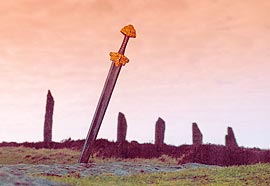![The Queen of Last Hopes: The Story of Margaret of Anjou | [Susan Higginbotham] The Queen of Last Hopes: The Story of Margaret of Anjou | [Susan Higginbotham]](http://ecx.images-amazon.com/images/I/51vYpa0sBEL._SL175_.jpg)
"Excellent story and audiobook"
Most of what I've read about the War of the Roses has been from the point of view of the Yorkists. The Queen of Last Hopes narrates the story from the Lancastrian queen Margaret of Anjou and it's quite different from the she-wolf that is portrayed in the Yorkist accounts. Higginbotham manages to make the reader care and sympathize with Margaret even tho she makes more than one mistake. Margaret's son, Edward who is also often portrayed as nothing but pure evil, is also given a less one dimensional personality. The story is told from Margaret, Henry VI, Edmund Beaufort, and Prince Edward's perspective. A less skilled writer would turn these many POVs into a mess, but in Higginbotham's book, it helps to tell the story, and give insight to the reader into the characters' minds and more importantly it does not feel as if they are all the same character. I plan to pick up more books from Higginbotham after having such a great experience with this story.
There are many characters to voice in this book and Quinn does a superb job at voicing each one of them and making them different. However, I did find Margaret's voice and French accent sounded a bit to forced and it seemed too slow for my taste. There are a couple of humorous moments in the book, and Quinn performance brings them to life providing a couple of chuckles in an otherwise quite serious reading. Overall, I enjoyed the performance, but I found the pacing a bit off.
There are many characters to voice in this book and Quinn does a superb job at voicing each one of them and making them different. However, I did find Margaret's voice and French accent sounded a bit to forced and it seemed too slow for my taste. There are a couple of humorous moments in the book, and Quinn performance brings them to life providing a couple of chuckles in an otherwise quite serious reading. Overall, I enjoyed the performance, but I found the pacing a bit off.






